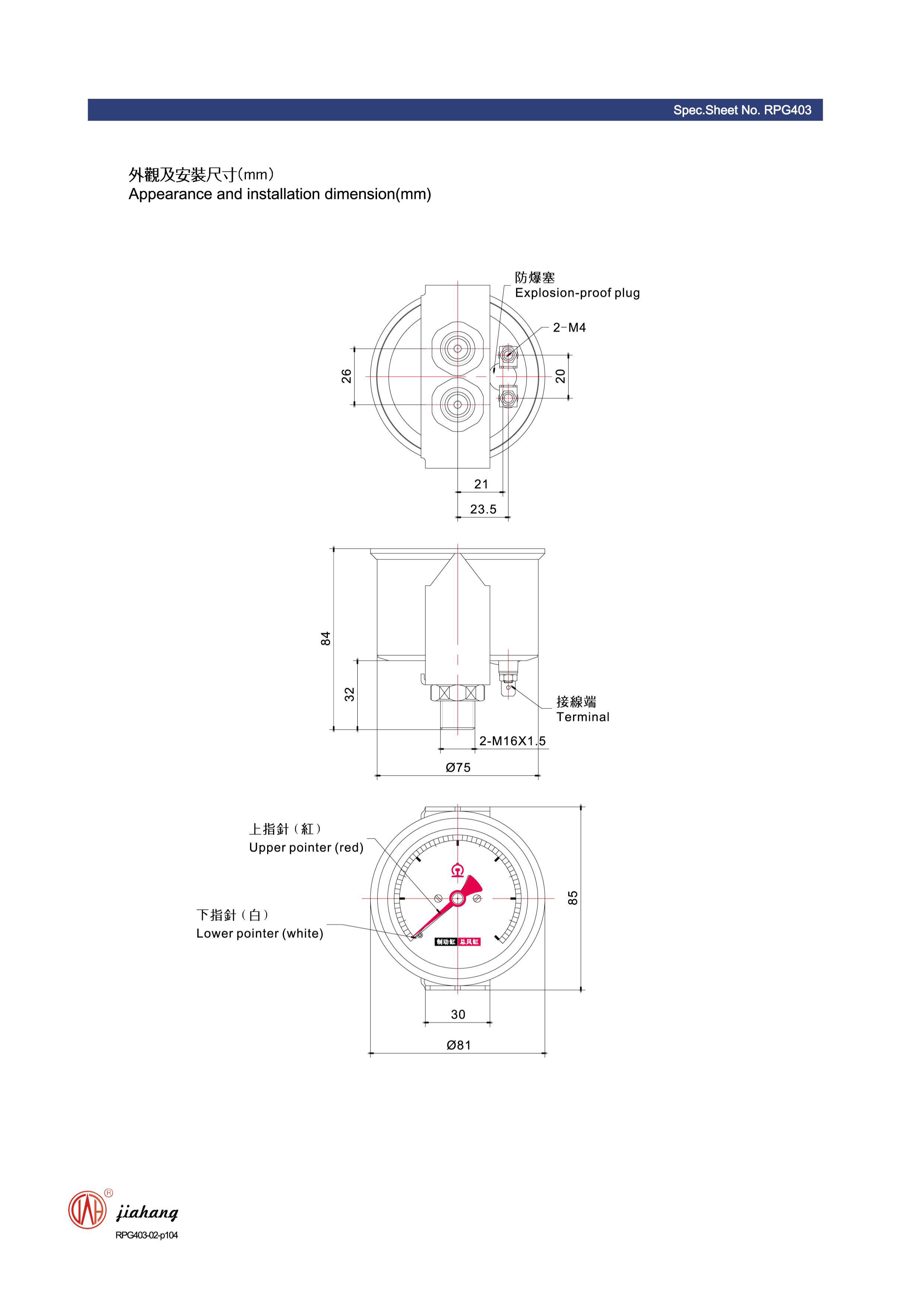
Sep . 12, 2024 10:58 Back to list
High-Quality Pressure Gauge Components Manufacturing
Understanding Pressure Gauge Components and Their Manufacturers
Pressure gauges are essential instruments in various industries, providing critical measurements for ensuring safety and efficiency. These devices help monitor and control pressure levels in systems such as gas, oil, water, and air. To understand the reliability and functionality of pressure gauges, it's crucial to consider the components that make them up, as well as the factories that manufacture these components.
Key Components of Pressure Gauges
A typical pressure gauge consists of several key components, each playing a vital role.
1. Bourdon Tube This is the heart of most mechanical pressure gauges. It is a curved metal tube that expands when pressure is applied. The degree of expansion moves a pointer on a dial, indicating the pressure level. The material and design of the Bourdon tube can significantly affect the gauge's accuracy and durability.
2. Movement Mechanism This component translates the motion of the Bourdon tube into a readable format. It typically involves gears and levers, which amplify the movement so that small changes in pressure result in noticeable dial movements.
3. Dial Face The dial displays pressure readings and is often marked with calibrations to help users interpret the readings easily. Dial faces can be customized in various sizes and designs, depending on the application and industry standards.
4. Pointer This is the indicator that moves across the dial face, directly showing the pressure level. Pointers can be designed to allow for high visibility in various lighting conditions.
5. Case Protecting the internal mechanisms, the case is designed to withstand harsh environments. It can be made from metals, plastics, or other materials depending on the intended application.
pressure gauge components factories

6. Connection Ports These are the points where the pressure gauge connects to the system being measured, typically through threads. Proper sealing is essential to prevent leaks and ensure accurate readings.
Manufacturing Pressure Gauge Components
The manufacturing of pressure gauge components is a specialized field. Factories producing these components often use advanced technology and precision engineering to ensure high-quality products. These facilities are equipped with state-of-the-art machinery to fabricate and assemble the various components.
1. Material Selection Manufacturers often use materials like stainless steel, brass, and special alloys that provide durability and resistance to corrosion. The choice of materials can greatly influence the gauge's performance and lifespan.
2. Quality Control Rigorous testing is essential in pressure gauge manufacturing. Factories implement quality control measures to test each component for accuracy, durability, and reliability. This includes calibration processes to ensure that gauges give accurate readings within specified tolerances.
3. Customization Many manufacturers offer customizable solutions to meet specific industry needs. This includes varying pressure ranges, dial sizes, and connection types.
4. Global Production Leading manufacturers often operate on a global scale, supplying components to industries ranging from oil and gas to pharmaceuticals, food and beverage, and aerospace.
Conclusion
Understanding the components of pressure gauges and their manufacturers is critical in appreciating how these devices operate. The interplay between technology, material science, and precision engineering ensures that pressure gauges remain reliable instruments for monitoring crucial systems across various industries. As industries continue to evolve, the demand for high-quality pressure gauge components will only grow, driving innovation within manufacturing processes.
-
High-Precision 5 Valve Manifold Differential Pressure Gauge Suppliers
NewsApr.29,2025
-
High-Precision Diaphragm Vacuum Pressure Gauges Manufacturers & Quotes
NewsApr.29,2025
-
Omega Differential Pressure Gauges High Accuracy & Durability
NewsApr.28,2025
-
Low Pressure Differential Pressure Gauges Precision Solutions & Quotes
NewsApr.28,2025
-
Digital Diaphragm Pressure Gaauge Precision Measurement & OEM Quotes
NewsApr.28,2025
-
Differential Pressure Gauge China Price High-Accuracy & Best Quotes
NewsApr.28,2025
